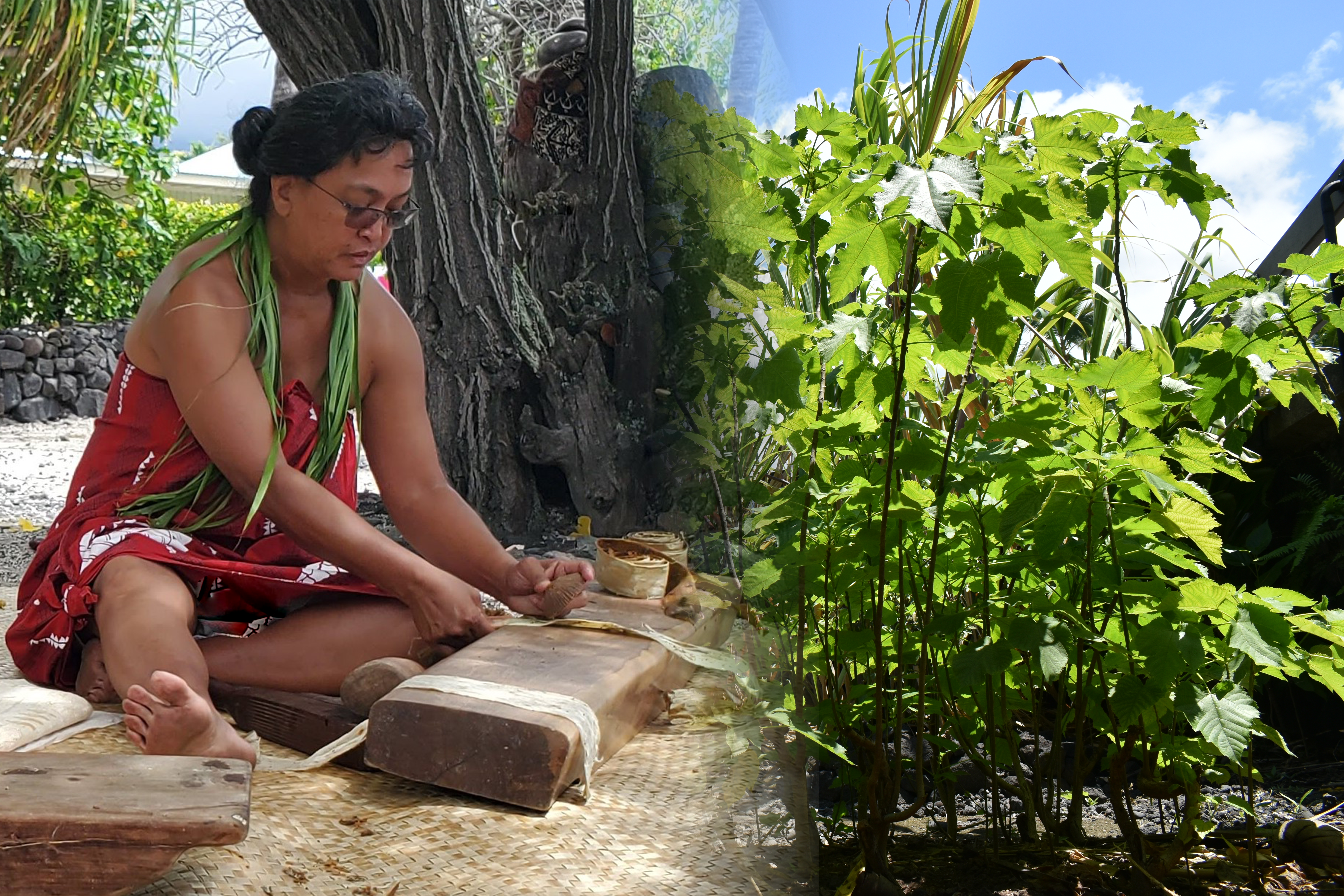Last updated: May 8, 2021
Article
Polynesian Heritage Plants: Wauke

NPS
Wauke (wă'u-ke)
Paper Mulberry
Broussonetia papyrifera
Moraceae Family
Polynesian Introduced
I hole ʻia no ka iʻe i ke kau o ka lā.
The time to cut designs in a tapa beater is when the sun is high.
[Do your best work when you can do your best].ʻŌlelo Noʻeau #1164 - Mary Kawena Pukui
Description
A small deciduous tree or shrub that can grow up to 50 feet (15 meters) high. The rough, lightly hairy leaves are variable in shape and have toothed edges. In cultivation, wauke is kept short (less than 8 feet tall) and the side branches are removed so that a tall, straight trunk remains. This is done so that the bark can be stripped leaving no branch holes.
Traditional Uses

NPS Photos
Originating in subtropical regions of mainland Asia, wauke traveled across the Pacific aboard voyaging canoes, eventually arriving in the Hawaiian islands. In many island nations, wauke is important in the making of barkcloth or tapa (kapa in Hawaiian). In this process, the bark is stripped and the outer bark is removed, leaving the inner bark fibers called bast. This is then soaked, fermented, pounded, and dried in a complicated process that prepares the fibers to be beaten with a series of kapa beaters to create kapa cloth. The final beaters, iʻe kuku, were carved with unique, intricate patterns leaving sort of a "watermark" on the cloth.
Kapa was the kānaka maoli (native Hawaiians) primary source of cloth. It was used to make clothing such as malo (loincloth) for men, knee-length paʻu (skirts) for women, and kihei (capes) for both sexes. Kapa was also used in a multitude of ways: blankets, burial coverings, decoration of ipu headgear, balls for games, wicks in lamps, bandages, coverings on uliuli (hula rattles), and more. Kapa was important at the heiau (temples) as well. It was used to make banners, it dressed the kiʻi images during Makahiki, and it adorned kapu sticks.
Wauke was also used in traditional medicine as a laxative and a cure for the mouth disease ʻea (thrush).

NPS Photo
Wauke at Puʻuhonua o Hōnaunau
Wauke is still cultivated and used a Puʻuhonua o Hōnaunau National Historical Park. Look for small, skinny wauke in the garden near the visitor center. Wauke is processed by cultural practitioners and the kapa beating process is often showcased at the annual cultural festival.
